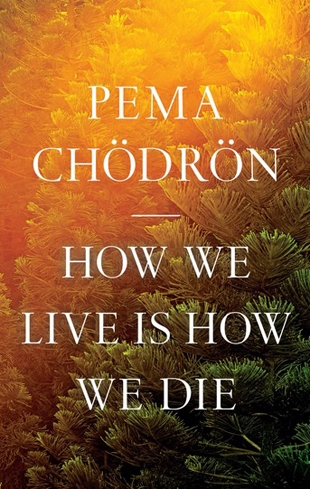You may have heard that certain religious traditions teach the value of contemplating your death. This can sound odd if you haven’t experienced such practices before. Well, this book is dedicated to that topic in Tibetan Buddhism.
The author is Pema Chodron, one of our Living Spiritual Teachers and one of the most important wisdom teachers alive today. She recently turned 86 years old and is still resident at Gampo Abbey in Nova Scotia.
Her book is prefaced with this statement from Bhutanese lore: “Contemplating death five times a day brings happiness.” Or transformation. Or awakening. You quickly realize that the perspective and practices being offered are designed to create in us a new, more generous, perspective and a willingness to change and see change as blessing.
Speaking of the human condition, Chodron writes, “We don’t enjoy uncertainty, insecurity, and groundlessness. We don’t seek out vulnerability and rawness. These feelings make us uncomfortable and we do whatever we can to avoid them.” This is what the Buddha meant by suffering as an ever-present part of ordinary life.
So how should we relate to suffering in our lives? “How we live is how we die,” is Chodron’s message, and “How we relate to things falling apart right now foreshadows how we’ll relate to things falling apart when we die.”
Her purpose is to not to make Tibetan Buddhists of her readers. She writes of the next life — a life after death — but doesn’t do so with a tone of certainty. “To say anything is definitely ‘like this’ or ‘like that’ somehow misses the point,” Chodron says. Also, a discussion of life after death is not the purpose of her book. The “bardo” or “transition” that matters most is “the natural bardo of this life.” This “is where our work lies. By coming to understand how this life is a bardo — a state of continual change — we will be ready to face any other bardos that may arise, however unfamiliar.”
One specific teaching that we especially appreciated was when Chodron discusses “using our emotions as the path to awakening” in chapter 16. She advises using what she calls “mirror-like wisdom” in which both our ordinary neuroses and their natural corrective, a kind of “mirror-like wisdom” available to all, “are co-emergent.” The one goes with the other. For example, you may have an anger problem, but within that emotion is the wisdom on the other side as well. Writing of the anger itself, Chodron explains: “If you don’t struggle with that energy, if you become one with that energy, it will wake you up.”
In these ways and more, Pema Chodron beautifully shows in this new book how to transform what happens to us and in us — even the painful episodes — into forms of awakening. After all, she writes, “Rebirth takes place every moment, and we could begin to see it like that.”
And yes, there is specific wisdom offered here on the very title of this book. See the excerpt accompanying this review for a substantive sample of this taken from the book’s final chapter.
